We’ve received some good questions lately about the process of architecture from the homeowners point of view. What do the different design stages look like graphically? When does the process go from diagram to actual architecture? Why do the graphics look the way they do? How does the imagery evolve and become something you can actually build from and eventually live in?
All admirable questions and ones that should be better explained by us architects. Given that it takes an average of 6 years to learn the architectural design process in school and another decade to really learn how to implement it in the practice of architecture – the process can be a bit esoteric. This blog aims to communicate architecture in such a way that it’s more understandable and accessible to people. So here goes… the quick and dirty guide to the architectural process. Now take this with a grain of salt – this is just our process, it’s not the right way or the wrong way to design, it’s certainly not the only way. Put ten architects in a room together and you’ll get ten different processes (in addition to a bunch of black turtle necks and acronyms you’ve never heard of).
Step 1: Interview and initial discussions
Often a couple of architects are interviewed, the homeowner(s) and the architect(s) figure out if there is a good fit with one another. Sometimes a homeowner just knows who they want to partner with (based on a raving recommendation or a specific design philosophy, etc.) and they skip the interview step. Typically the architects have a portfolio of past projects to review and possibly examples of their process.

Step 2: Information gathering + documentation
Homeowner goals, needs and requirements are discussed. The architects visit the site, review the existing conditions and take as-built measurements of what is there (existing home/property). A set of as-built plans are created and a copy is given to the homeowner for their records. These are simple floor plans and exterior elevations – a minimal set showing what currently exists on site and nothing more. A surveyor is typically contacted at this stage and scheduled to produce a site survey – this survey is eventually incorporated into the as-built documents. The architects visit the city/county building department to review applicable records which may include as-built drawings of an existing home; previous surveys; public records such as previous liens on the property. The architects gather information from state and city agencies regarding specific land use and building code requirements as well as pre-submittal and pre-permit procedures. The architects also create a work plan to outline what will be done and by when.
Gathering information with the homeowner(s):


Survey:
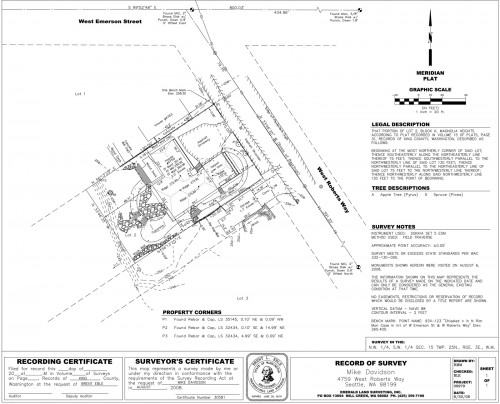
As-built drawings of an existing home:
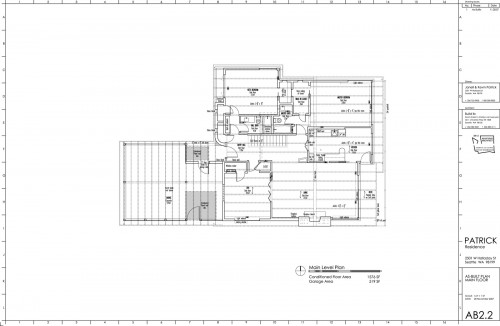
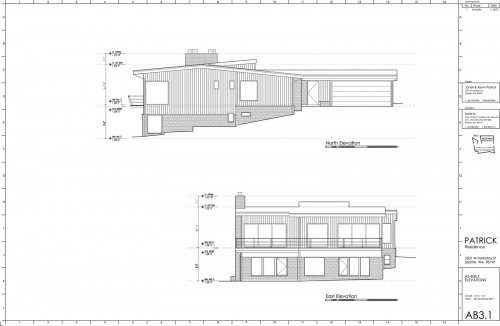
Step 3: Schematic Design and Feasibility
The architects generate 2-3 preliminary designs incorporating the information from step two. At this stage the architects are also bringing design concepts to the table (the stuff architects learned in school). Maybe there was a specific site feature that could be enhanced with the new architecture or opportunities within the project not previously discussed. The architects explore the sequence of how you approach the house and move through the house. How the home is experienced is a focus of this stage. The general locations of the functions within the house are considered and graphically represented in diagram form. The graphics, illustrations and sketches are just diagrams at this stage – it’s not architecture yet. Features like windows may be added schematically or not at all. Simple plans and elevations are produced to represent relationships among spaces and the basic envelope shape (think about it like carving a simple, dumb model out of a block of clay). Material options start to become part of the discussion and a target budget is established/confirmed for the overall project. There are typically 2-4 homeowner meetings involved with this step. The homeowner makes decisions with help from the architects regarding the various schematic options. An overall design strategy is chosen.
Code analysis and envelope possibilities:
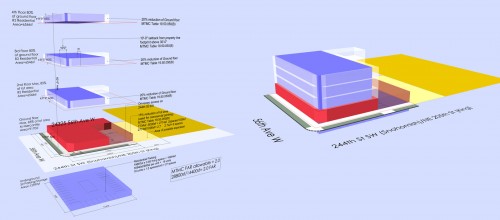
Relationship of functions, site considerations, massing studies:
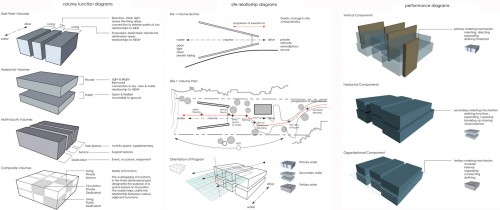
Relationship of functions, massing studies:
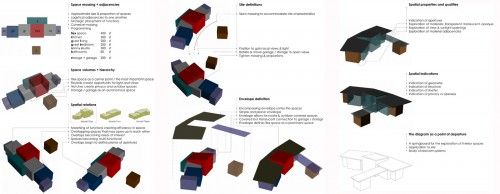
Circulation studies, light studies:
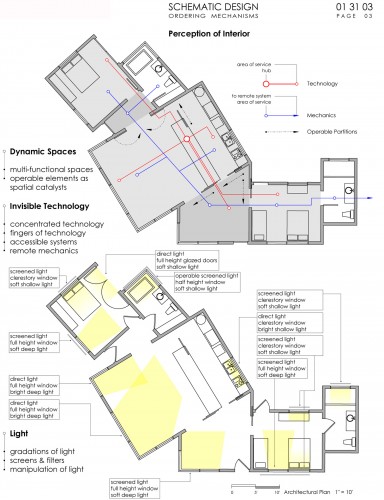
Step 4: Design Development + Permit Documents
As decisions continue to be made, the architects develop the schematic drawings into permit documents. The graphics evolve from diagrams to actual architecture at this step. The drawings are refined in regards to details and methods. Materials are decided on and the architects figure out how everything fits together (how does the floor meet the wall: base trim, flush trim, no trim). Window openings are further defined with mullions and opening locations. Information from other consultants, like the structural engineer, is developed and coordinated with the design drawings. Specifications for materials, fixtures/ appliances, assembly details, and relevant code information are incorporated into the project. Recommendations from trades, suppliers, and manufacturers are added to the drawing set. The homeowner continues to make decisions at a more specific level of detail (four or six burner gas range, which direction do the windows open?)
Material studies and furniture layouts:
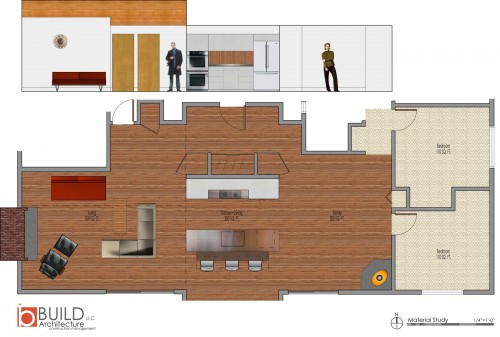
Comparative material options:
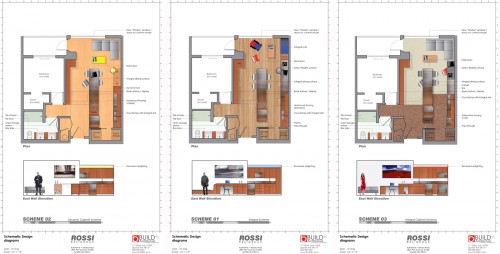
Building assembly and material breakout:
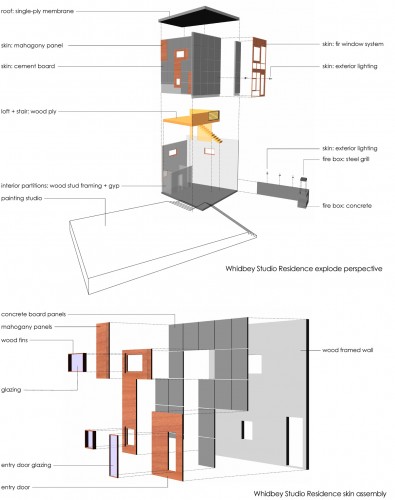
Elevation and material studies:
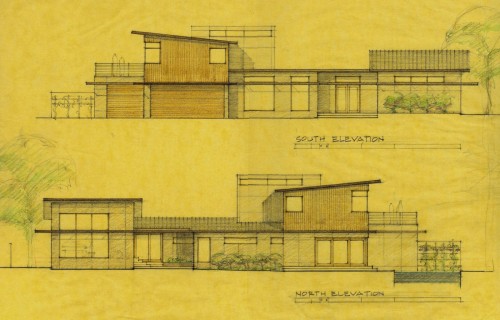
Step 5: Construction Documents + Permit Acquisition
A set of permit drawings is a simplified construction set. The permit documents are used to submit, coordinate, and obtain the building permit from the city or county. The city/county doesn’t typically care to review each and every detail of a home – they just want to make sure you’re meeting state, city and local codes. It is typically an effective use of time to turn in a permit set early, covering the requirements, to get the ball rolling with the city while the architects continue to work on a more thorough drawing set required for construction. The drawings continue to develop down to the very last details (how the handrail bracket connects to the wall, how the tile floor in the shower is sloped to drain…)
Construction documents:
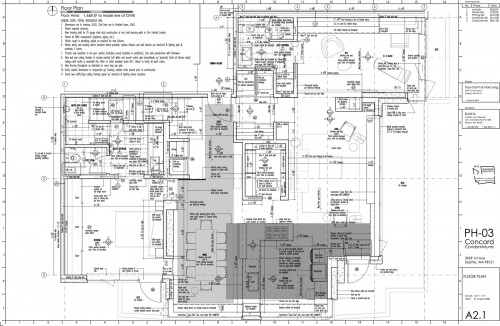
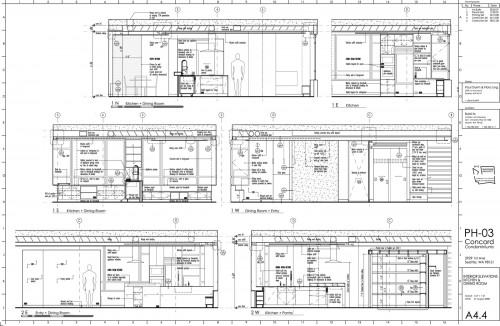
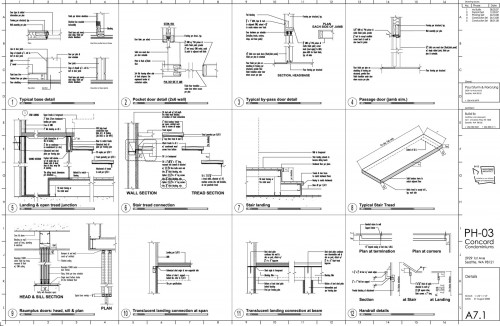
Step 6: Selection of a General Contractor
General contractors are interviewed and a good fit is established. Sometimes a homeowner just knows who they want to partner with (based on a raving recommendation or a specific building philosophy, etc.) and they skip the interview step.
Step 7: Construction Administration
The documents and drawings for the project are now complete and construction begins. Typically with a project of any complexity the architect is retained to answer questions, deal with clarifications and administer revisions if necessary. The architect also protects the interests of the homeowner and the integrity of the design. The architect reviews the invoices, overall costs and scheduling. There is also the option for a homeowner to go the design-build route – but that’s another post…

[all skteches, diagrams, drawings and photos by BUILD llc]





